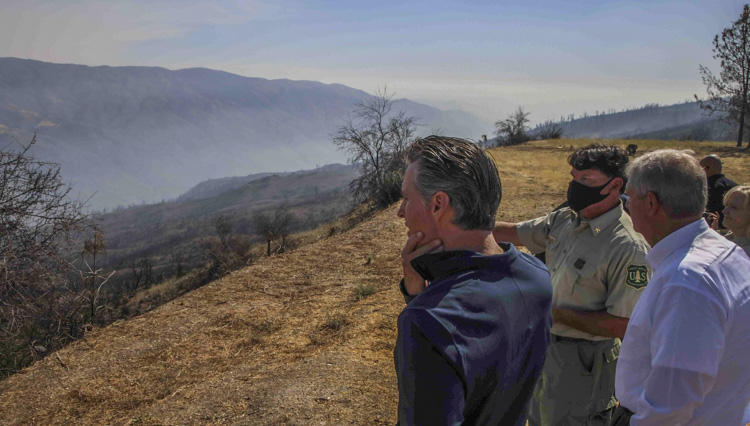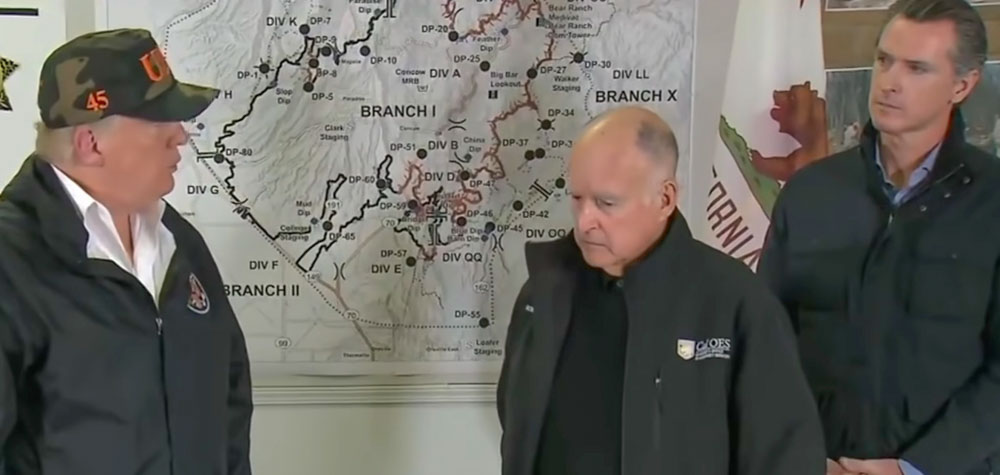
When Secretary of Agriculture Tom Vilsack said August 4 we can’t manage forests and suppress fires “on the cheap” it was not the first time that concept has been stated. Here is part of what the Secretary said when he was meeting with California Governor Gavin Newsom to discuss state and federal collaboration on wildfire response and fuels management across the West:
We are prepared to do a better job [of forest management] if we have the resources to be able to do this… Candidly, I think it’s fair to say over the generations and decades, we have tried to do this job on the cheap. We have tried to get by, a little here, a little there, with a little forest management here, a little fire suppression over here, but the reality is this has caught up to us.
We have to significantly beef up our capacity. We have to have more boots on the ground… And we have to make sure our firefighters are better compensated. Governor, that will happen.
We need to do a better job, and more, forest management to reduce the risk of catastrophic fire.
Looking back at the Wildfire Today archives, here is where we’ve seen that phrase before — excerpts from the articles:
William Scott, September 8, 2012:
Stop narrowly thinking of fires as a land management issue, and begin treating them as a national security issue. Finally it’s time. We have to develop and field a robust large air tanker fleet of firefighting aircraft. The Forest Service has made a good start, but it still suffers from a culture and attitude of what firefighters call ‘cheapism’, the idea that we can fight wildland fire on the cheap. And that’s no longer acceptable.
Senator Harry Reid, July 19, 2013, from the Las Vegas Review-Journal:
As firefighters head home from Southern Nevada, U.S. Sen. Harry Reid on Wednesday blamed “climate change” for the intense blaze that consumed nearly 28,000 acres and drove hundreds of residents from their homes around Mount Charleston this month.
Reid said the government should be spending “a lot more” on fire prevention, echoing elected officials who say the Forest Service should move more aggressively to remove brush and undergrowth that turn small fires into huge ones.
“The West is burning,” the Nevada Democrat told reporters in a meeting. “I could be wrong, but I don’t think we’ve ever had a fire in the Spring Mountains, Charleston range like we just had.
“Why are we having them? Because we have climate change. Things are different. The forests are drier, the winters are shorter, and we have these terrible fires all over the West.”
“This is terribly concerning,” Reid said. Dealing with fire “is something we can’t do on the cheap.”
“We have climate change. It’s here. You can’t deny it,” Reid went on. “Why do you think we are having all these fires?”
Bill Gabbert, February 25, 2018:
The federal government is reducing the numbers of large air tankers and helicopters on exclusive use contracts. Air tankers are being cut from 20 to 13, and Type 1 helicopters over the last year have been reduced from 34 to 28. Cutting back on these firefighting resources is not going to enhance our ability to suppress new fires before they become large, dangerous, and expensive.
You can’t fight fires on the cheap.
.
Sometimes “cheap” is too expensive.— Wildfire Today ? (@wildfiretoday) February 24, 2018
Bill Gabbert, March 16, 2018:
OpEd: I am tired of complaints about the cost of fighting wildfires
(This was first published on Fire Aviation)
The large air tankers on exclusive use contracts have been cut this year from 20 to 13. In 2002 there were 44. This is a 73 percent reduction in the last 16 years.
No scooping air tankers are on exclusive use contracts this year.
The large Type 1 helicopters were cut last year from 34 to 28 and that reduction remains in effect this year.
Some say we need to reduce the cost of fighting wildfires. At first glance the above cuts may seem to accomplish that. But failing to engage in a quick, aggressive initial attack on small fires by using overwhelming force from both the air and the ground, can allow a 10-acre fire to become a megafire, ultimately costing many millions of dollars. CAL FIRE gets this. The federal government does not.
Meanwhile the United States spends trillions of dollars on adventures on the other side of the world while the defense of our homeland against the increasing number of acres burned in wildfires is being virtually ignored by the Administration and Congress. A former military pilot told me this week that just one sortie by a military plane on the other side of the world can cost millions of dollars when the cost of the weapons used is included. The military industrial complex has hundreds of dedicated, aggressive, well-funded lobbyists giving millions to our elected officials. Any pressure on politicians to better defend our country from wildfires on our own soil is very small by comparison.
I am tired of people wringing their hands about the cost of wildfires.
You can’t fight fire on the cheap — firefighting and warfighting are both expensive. What we’re spending in the United States on the defense of our homeland is a very small fraction of what it costs to blow up stuff in countries that many Americans can’t find on a map.
Government officials and politicians who complain about the cost need to stop talking and fix the problem. The primary issue that leads to the whining is that in busy years we rob Peter to pay Paul — taking money from unrelated accounts to pay for emergency fire suppression. This can create chaos in those other functions such as fire prevention and reducing fuels that make fires difficult to control. Congress needs to create the “fire funding fix” that has been talked about for many years — a completely separate account for fires. Adequately funding fire suppression and rebuilding the aerial firefighting fleet should be high priorities for the Administration and Congress.

